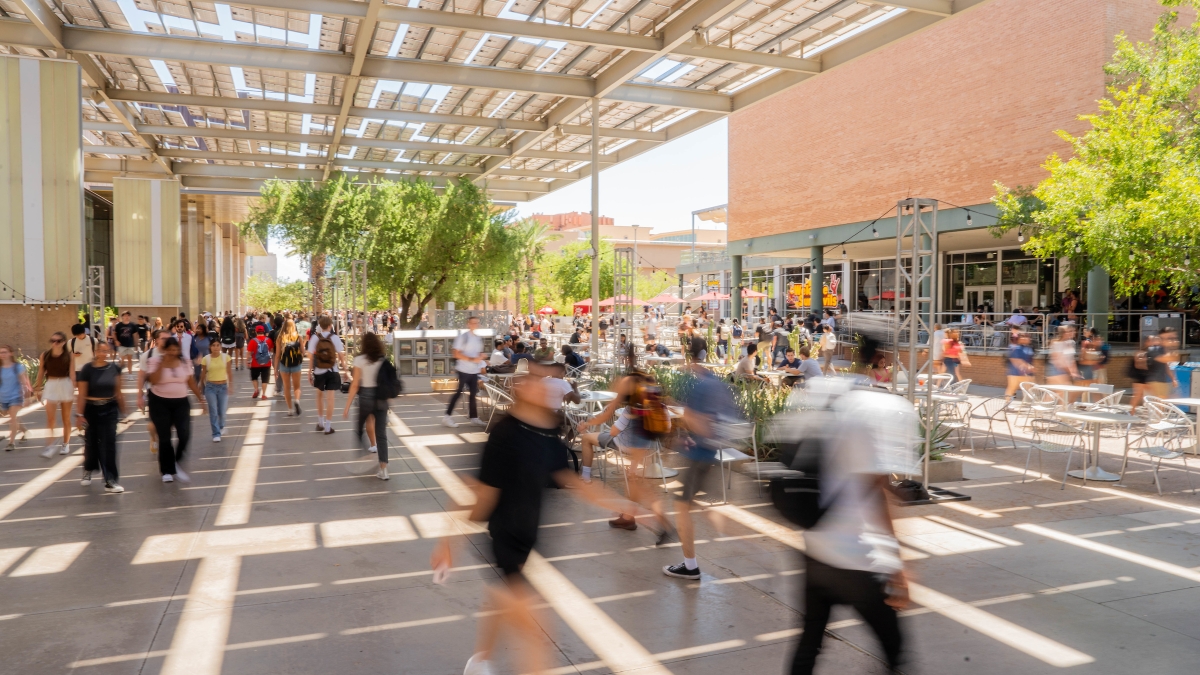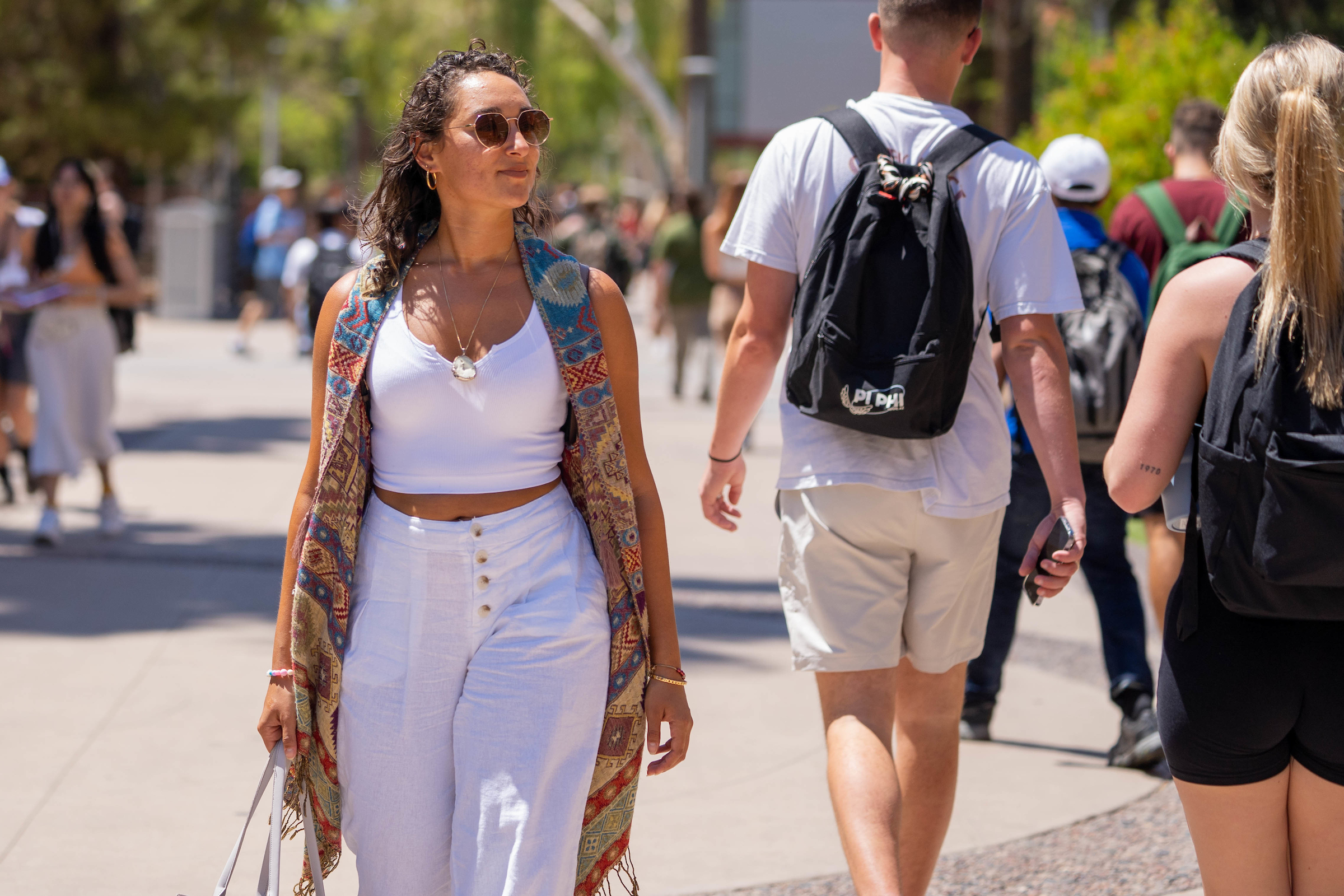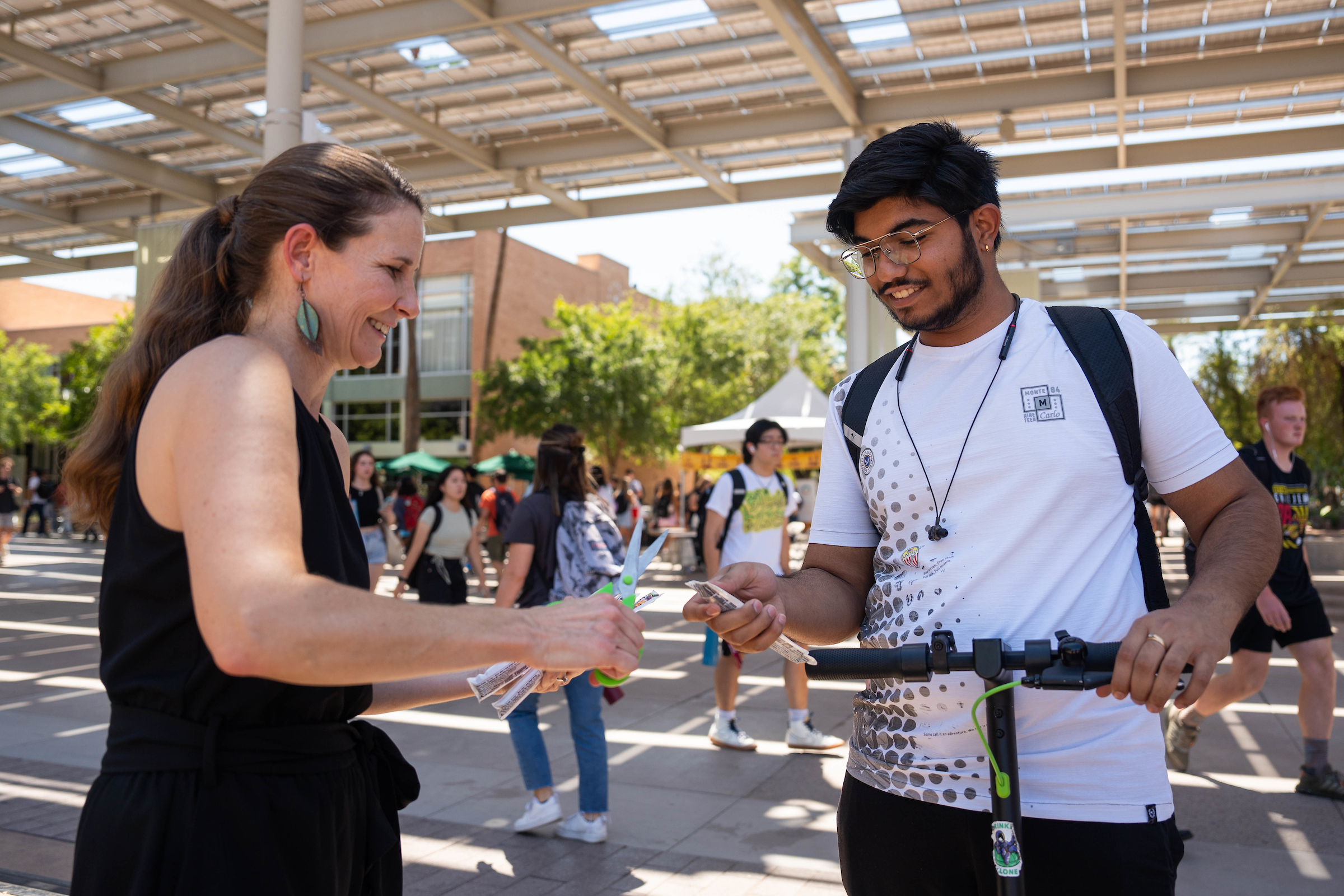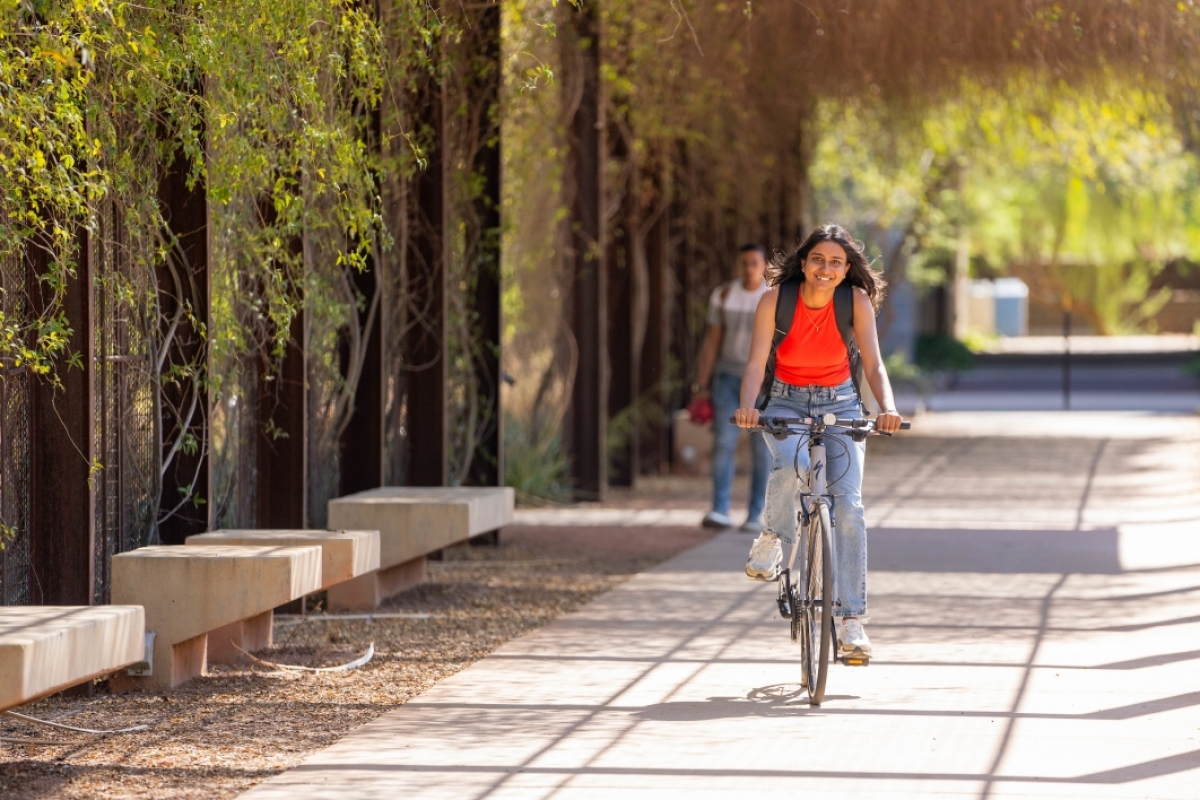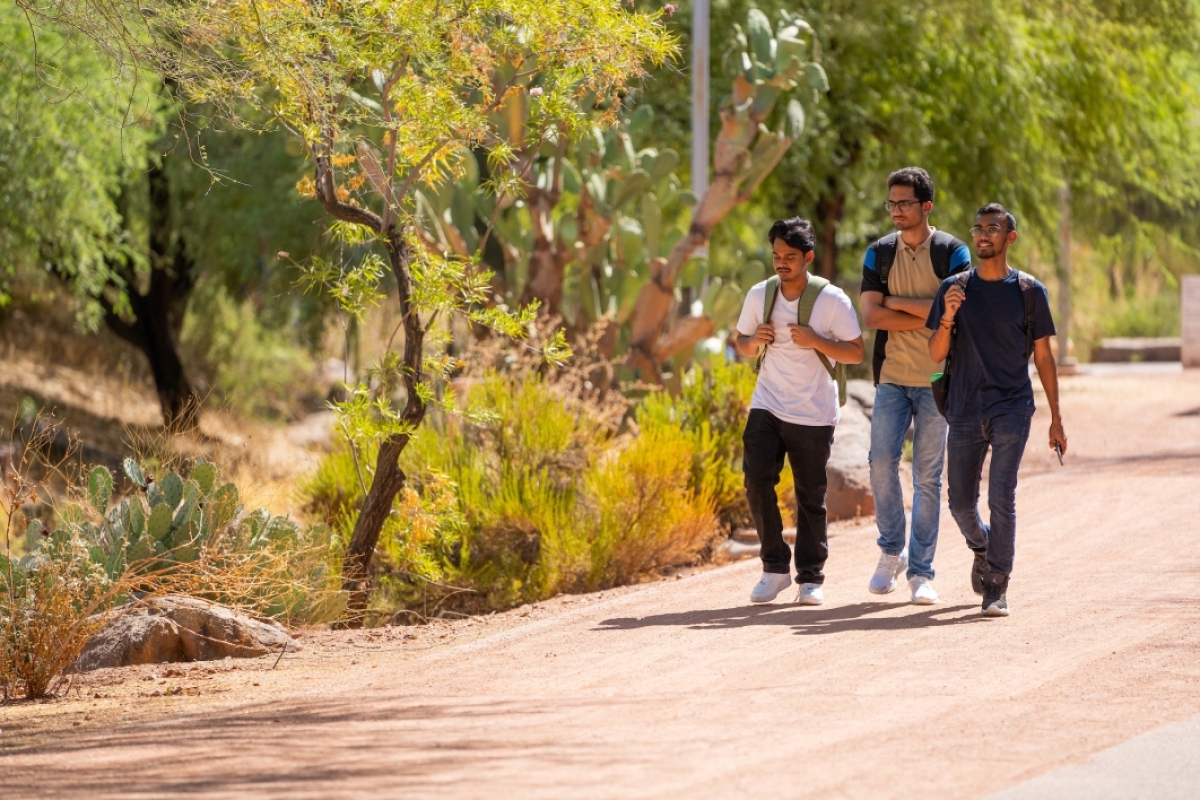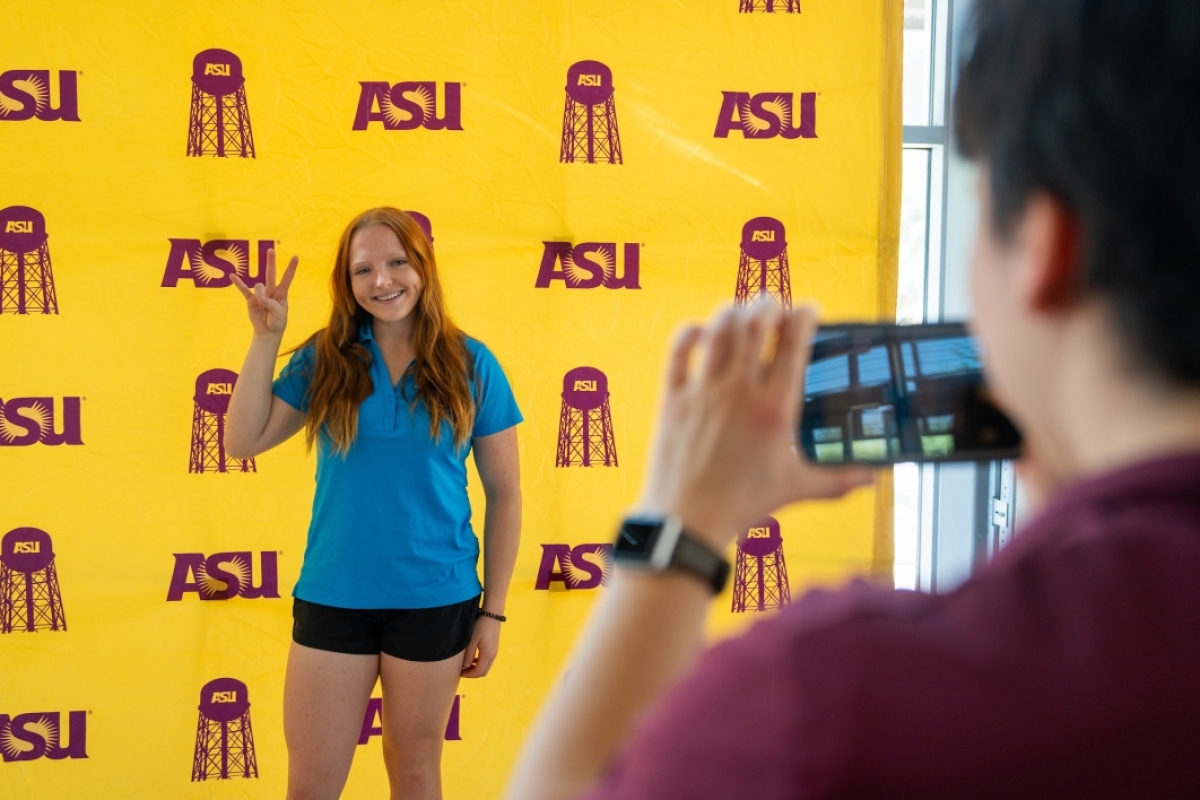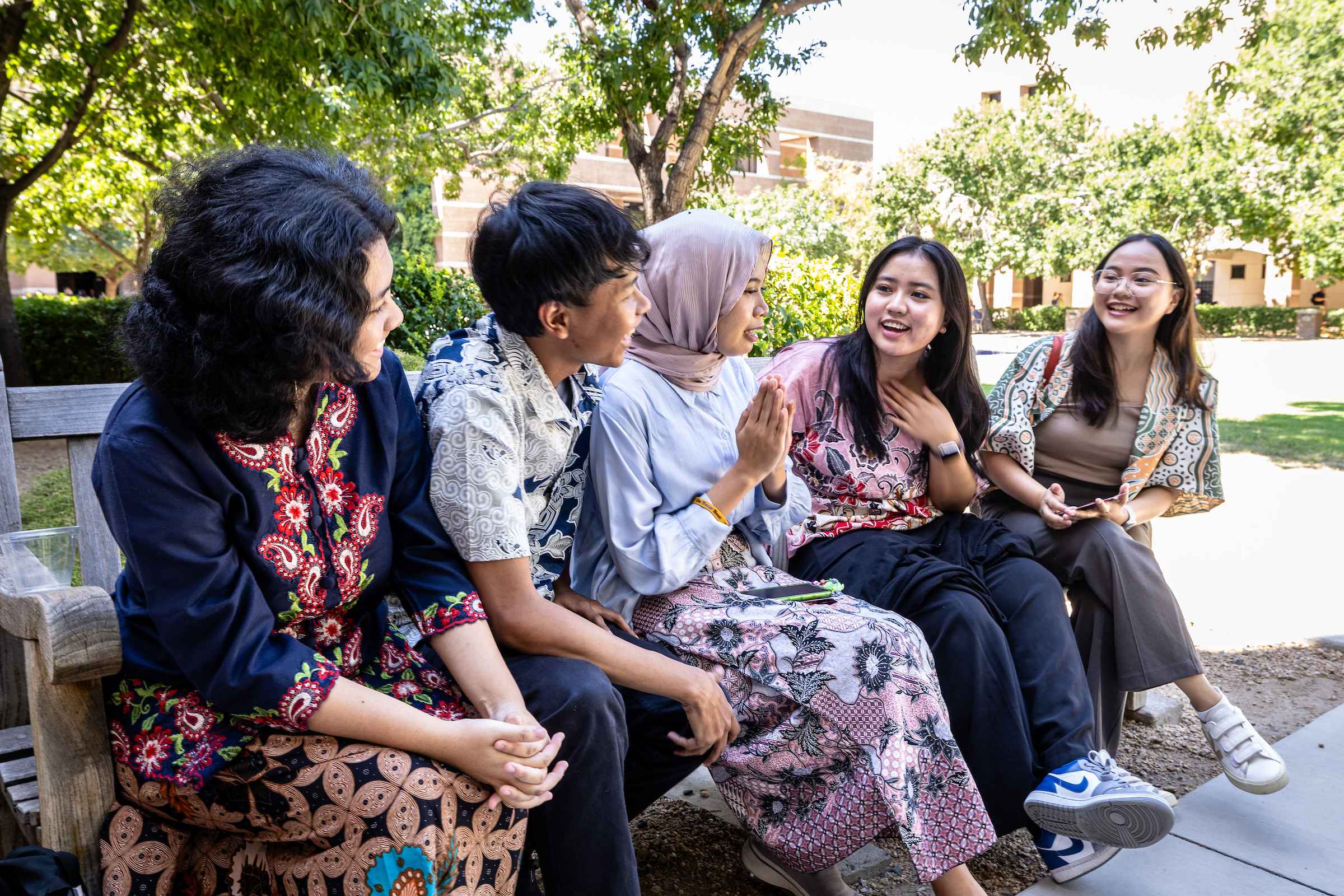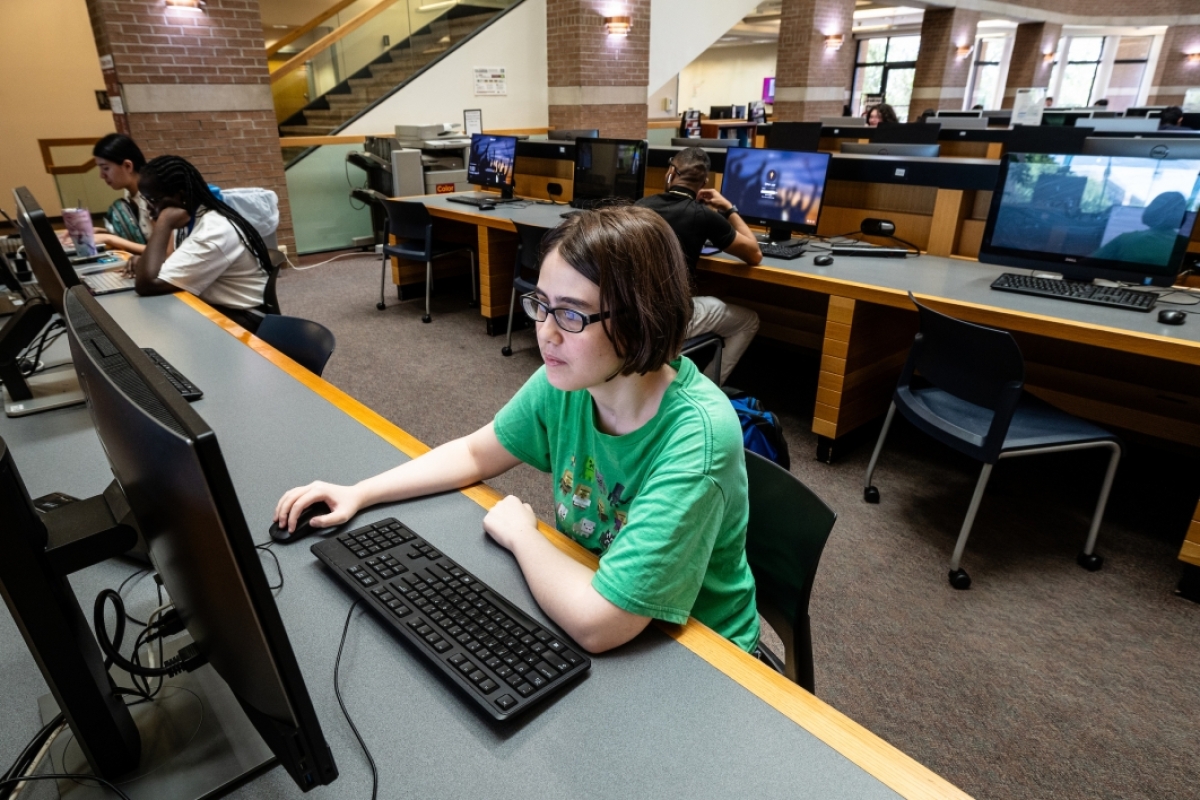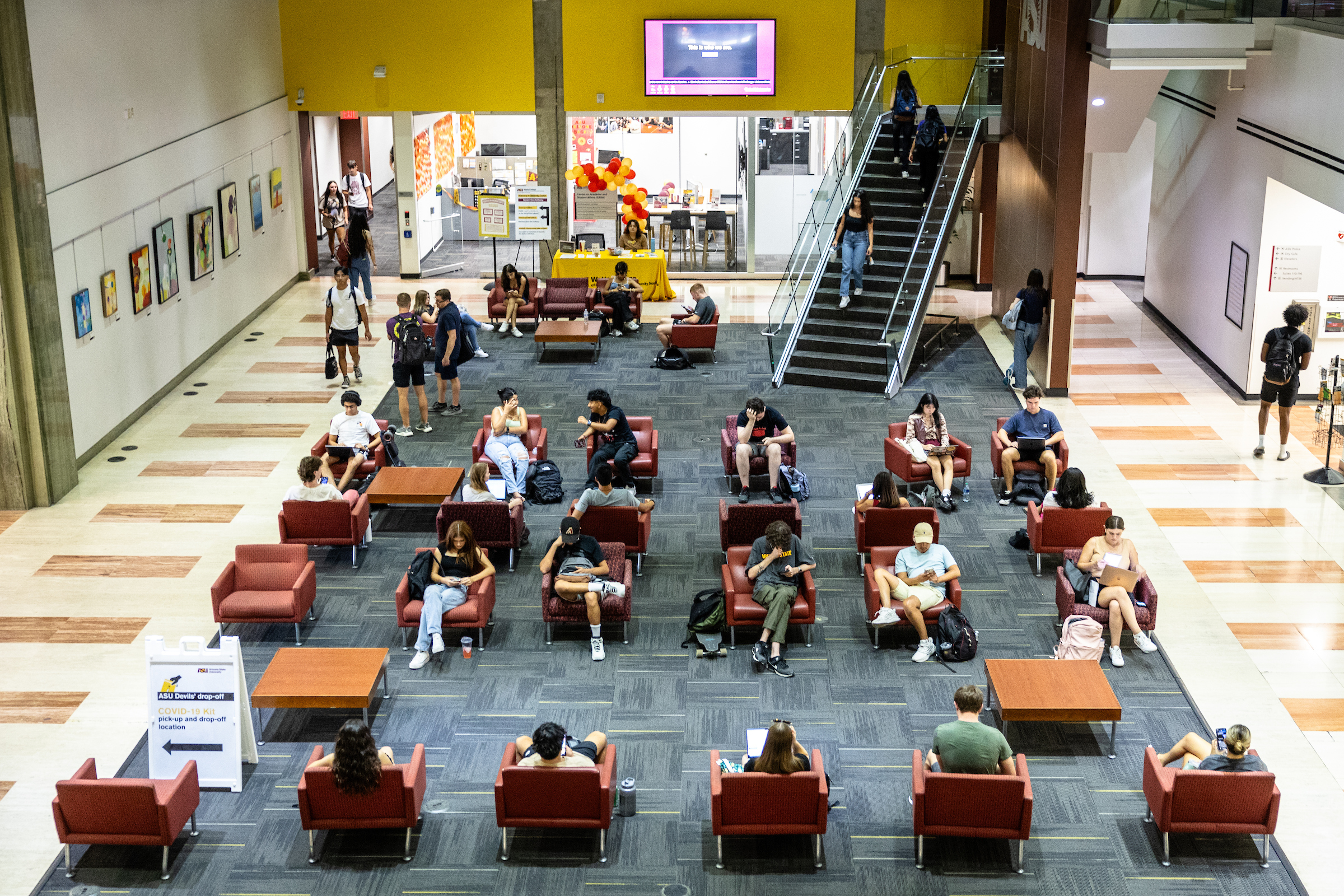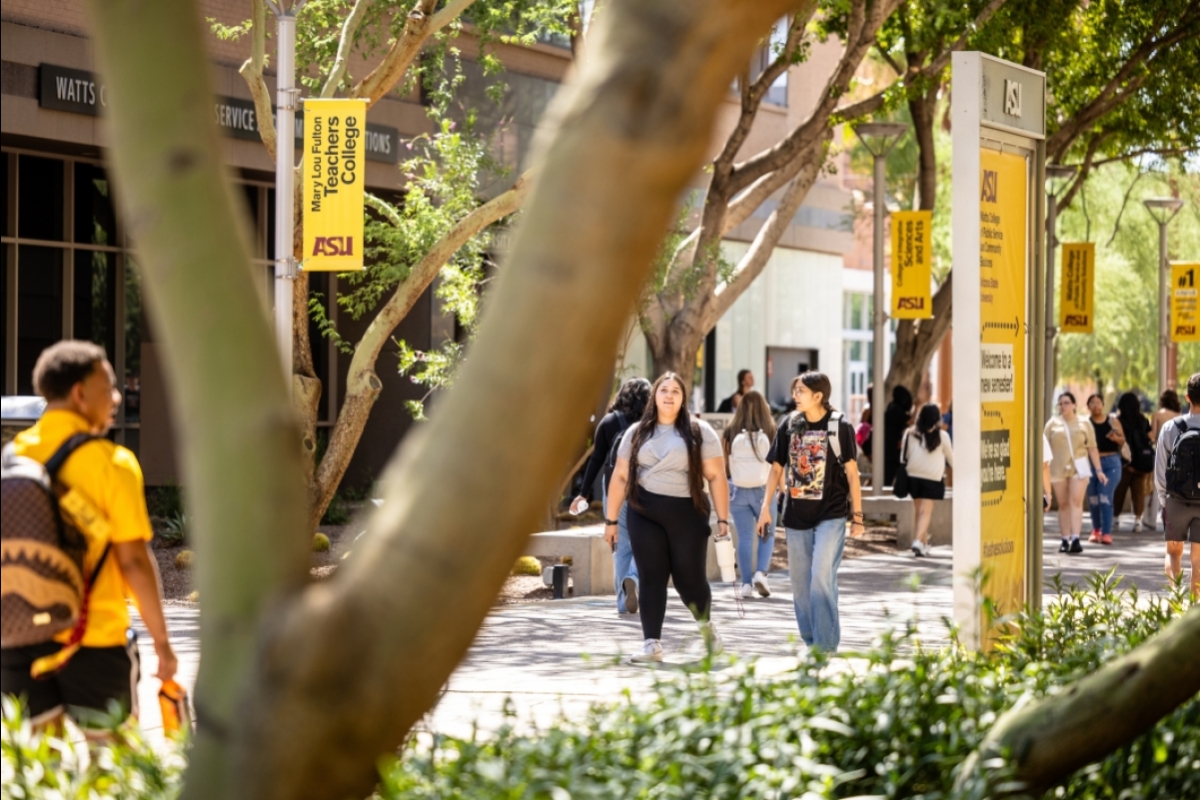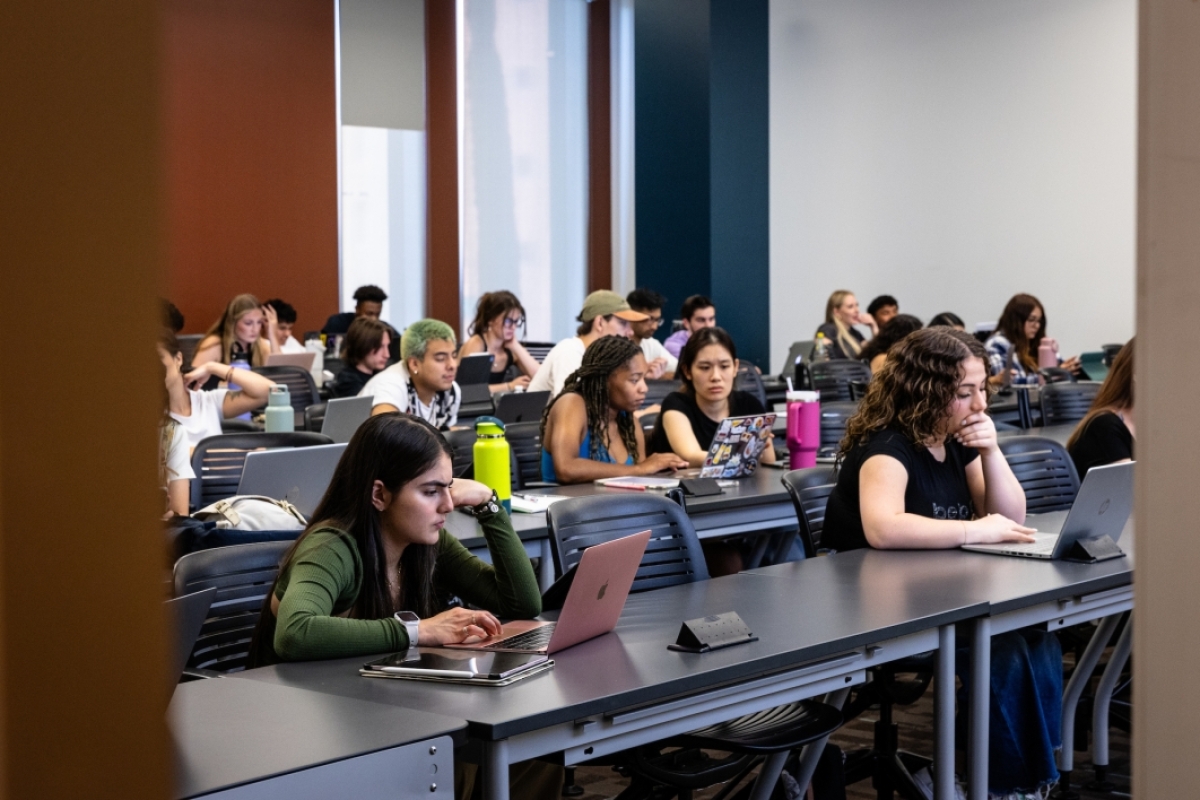On the first day of the fall semester at Arizona State University’s Tempe campus, students are essentially looking for three things: a water source, their classrooms and a path forward as they navigate their way through college and toward a career.
Student veteran Eliza DelaPaz is also looking for something else; she wants to “expand (her) purpose and passion in this world.”
Because DelaPaz is not a typical college student.
She graduated high school in 2013 and joined the Marines the month after she turned 18. After serving six years in the military – some of them with the Marine Security Guard – DelaPaz then went a different route.
She spent time traveling abroad, getting to know other cultures and herself. She lived in West Africa for three years, where she owned a digital marketing agency and a fitness center. Then she moved to an East African island where she spent five months meditating and reflecting on her life.
Third-year neuroscience major and transfer student Eliza DelaPaz walks to class on the first day of the fall semester on the Tempe campus Aug. 17. Photo by Samantha Chow/Arizona State University
When DelaPaz got back to the states in September 2022, she spent three months driving across the country, visiting national monuments, seeing how a sustainable commmunity works, and reconnecting with family members and understanding her roots.
“These opportunities helped me to expand my consciousness and be more open to changing my belief systems,” said DelaPaz, whose education will be funded through the Veteran Readiness and Employment program. “This has allowed me to have more compassion for people, places and cultures that maybe I didn’t understand from my perspective growing up in the Western world.”
Today, DelaPaz is a certified life coach, a yoga teacher and a social media influencer. She said her life experiences and spiritual endeavors have prepared her for today – her first day at a major university.
At 9 a.m., she attended her first class, Basic Energy Science, in the Rob and Melani Walton Center for Planetary Health. DelaPaz was one of 18 students and 75 minutes later, she had her first college class under her belt.
DelaPaz will be taking 15 credit hours this semester, majoring in neuroscience. She hopes to obtain her PhD in a few years.
“I’m excited to have this opportunity with the experiences I now have,” DelaPaz said. “I feel more equipped to receive this information and knowledge, and can now apply it effectively.”
First-year computer science major Vansh Malhotra (right) gets a free popsicle from student organization advisor Hannah Parmelee outside of the Tempe campus Memorial Union on the first day of classes on Aug. 17. Photo by Samantha Chow/Arizona State University
Showing up prepared
At just after 9:30 a.m., students were beginning to mill around the Polytechnic campus.
But inside the Student Union, Lynett James, an academic success advisor coordinator, was sitting at a quiet “Can I Help?” booth.
“We’ve had a few students come by,” she said. “The usual questions for the first day: Where do I get my ID? Where is my classroom? Typical stuff.”
Some students could be seen studying the campus map they had downloaded onto their phone but, for the most part, the first day of school felt ordinary.
Perhaps that’s a testament to the job ASU does in preparing students for the new school year.
Or, more and more students are doing what first-year student Melissa Figueroa did before Thursday.
“I actually came three days ago to see the campus and where my classes are,” said Figueroa, who is majoring in agribusiness. “So I’m not nervous. I don’t feel like, ‘Where am I supposed to go?’ It seems like a lot of students already know what they’re doing.”
Inside room 135 of Santan Hall, Assistant Teaching Professor Jessica Barnett was guiding students through the curriculum of GIT 215, her Introduction to Web Authoring class.
For Barnett, the first day of school is a chance to get her students acclimated.
“Just to set expectations, to help them understand what they need to do during the semester,” Barnett said.
The students in Barnett’s class were as quiet as the campus, but Dylan Heath understood the silence.
Heath, a sophomore majoring in professional flight, recalled not knowing his classmates his first day as a freshman.
“Nobody talked to each other. You could just feel that vibe,” he said. “But after the first week, that all changed. It felt like high school again.”
Heath had some words of advice for students experiencing anxiety on the first day of school.
“Just talk to people,” he said. “Make some friends. Meet some new people. I already connected today with a couple of people I didn’t know. This is a great place to do that.”
Tackling first-day nerves
ASU’s West campus also had a chill vibe — and its tree-lined paths and large stretches of green space may even make it a cool (or cooler) campus.
But that didn’t stop some students from being understandably anxious on the first day of school.
Fara Alessandri said she was so nervous, she started shaking during her first class.
The exchange student from Indonesia wanted to make a great first impression on her professor. But then he suggested a brainstorming session.
“Back in Indonesia, that is not something we often do,” said Alessandri, a global management major, who was sitting on a shady bench with a cohort of other exchange students. “I was so nervous, I was shaking. I started speaking and was shaking the entire time I spoke.”
Indonesian exchange students (left to right) Alika Swity, Bagas Wijaya, Arma Nadifah, Farah Alessandria and Zahra Khaliqah talk during a break on the first day of the fall semester on the West campus Aug. 17. Photo by Charlie Leight/ASU News
But the experience was still a success.
“By the end of the class, he knew my name,” she said.
In front of the Fletcher Lawn, Samuel Vernet was waiting in line for a photo booth that was set up for students, when free drinks, camera-shaped cookies and chips were handed out.
Vernet was coming from his 9 a.m. class. He breathed in and let out a long sigh as if he’d been holding it in all morning.
“I had a very nerve-wracking morning,” said Vernet, an exploratory applied computing student. “I was nervous before the class started and I was nervous in the classroom. I could not stop being nervous.”
Vanessa O’Neal, a fourth-year student from California studying global management who was also waiting for the booth, had some friendly advice.
“It’s OK. It’s going to be OK,” O’Neal said. “You’re a freshman. It’s very common to be overwhelmed.”
The stream of students ebbed and flowed as they walked to and from classes. Small groups gathered on benches and outdoor tables and the food court area was filled with people meeting old friends and being introduced to new friends.
But some students were content to be alone.
By 11 a.m., Hana Cofield, a fourth-year student studying criminal justice, had already spent two hours on assignments in the Fletcher Library.
“I don’t like procrastinating,” she said.
Help Centers were scattered throughout the campus and volunteers answered questions about classes, parking and places to hang out and get food.
“I’ve seen a lot of happy faces,” said Yocelyn Ruiz, an event planner for the West campus. “It’s been a successful day.”
Freshman Kaiya Warman, from Tucson, described her first day as “amazing.” There were no first-year fears for her.
“There is so much support,” said Warman, a first-generation student studying integrative health. “I was not nervous at all. All of the events that ASU planned really prepared me for today.”
Carlos Zuniga, a second-year student, came out of his class around 10:30 a.m. and headed to his dorm to take a nap.
“I couldn’t sleep last night,” said Zuniga, a communication major. “I am nervous every first day. But it’s the nervous excitement that comes with starting a new year.”
The significance of a Sun Card
Meanwhile at the Downtown Phoenix campus, Daniel Maldonado was on hand to help students with everything from directions to health insurance.
Maldonado, a junior majoring in nonprofit management and leadership in the Watts College of Public Service and Community Solutions, is a student worker for the Dean of Students’ Office.
On Thursday, he was stationed at a table just inside the doors of the University Center.
“I’m helping students navigate through the buildings and through my job I’m reaching out to students about their basic needs — food assistance, health insurance, all of that,” he said.
The most common question of the morning?
“They all want to know where to get their Sun Card,” he said, pointing across the hall while at that very moment a student veered by to ask him, “Where are the ID cards?”
Students spend some down time in the lobby of the University Center on the Downtown Phoenix campus during the first day of the fall semester on Aug. 17. Photo by Charlie Leight/ASU News
The ASU Sun Cards are very important on the Downtown Phoenix campus, as students must swipe them to get into the classroom buildings and into some of the individual labs and rooms.
Mercedes Amador, director of student engagement and retention for the College of Health Solutions, was in the lobby of the Health North building when she saw several card-less students waiting outside the doors to be let in.
“A lot of them don’t know their ID card is more than just an ID card, or they just got it and it’s not in the system yet,” she said as she opened the door for them.
It was also the first day of the academic session for Amador, who is in the second year of the doctoral degree program in leadership and innovation in the Mary Lou Fulton Teachers College. She is taking classes through ASU Online while also working full time.
“I’m looking at better supporting our underrepresented students that are health degree-seeking,” she said.
The College of Health Solutions had tables set up in the lobbies of both Health North and Health South.
Sierra Crenshaw, coordinator of student engagement for the college, was staffing the Health South table, which was covered with stickers, highlighters, notepads, pens and bags of trail mix. A backdrop was set up nearby for students to take first-day-of-class selfies.
“People are asking if they can have what’s on the table and it’s an immediate yes,” she said.
“Hopefully we make their day a little brighter with some fun stuff.”
Story written with contributions from ASU reporters Marshall Terrill, Scott Bordow, Dolores Tropiano and Mary Beth Faller.
Top photo: Students walk around outside of the Tempe campus Memorial Union on the first day of classes on Aug. 17. Photo by Samantha Chow/Arizona State University
More Sun Devil community

Barrett program unlocks study abroad for first-year honors students
Twenty first-year students from Barrett, The Honors College at Arizona State University are spending their second semester studying abroad in Rome, Italy.Traveling in a tight-knit honors community…

A champion's gift: Donation from former Sun Devil helps renovate softball stadium
Jackie Vasquez-Lapan can hear the words today as clearly as she did 17 years ago.In 2008, Vasquez-Lapan was an outfielder on Arizona State University’s national championship-winning softball team,…

Student-led business organization celebrates community, Indigenous heritage
ASU has seen significant growth in Native American student enrollment in recent years. And yet, Native American students make up less than 2% of the student population.A member of the Navajo Nation,…


